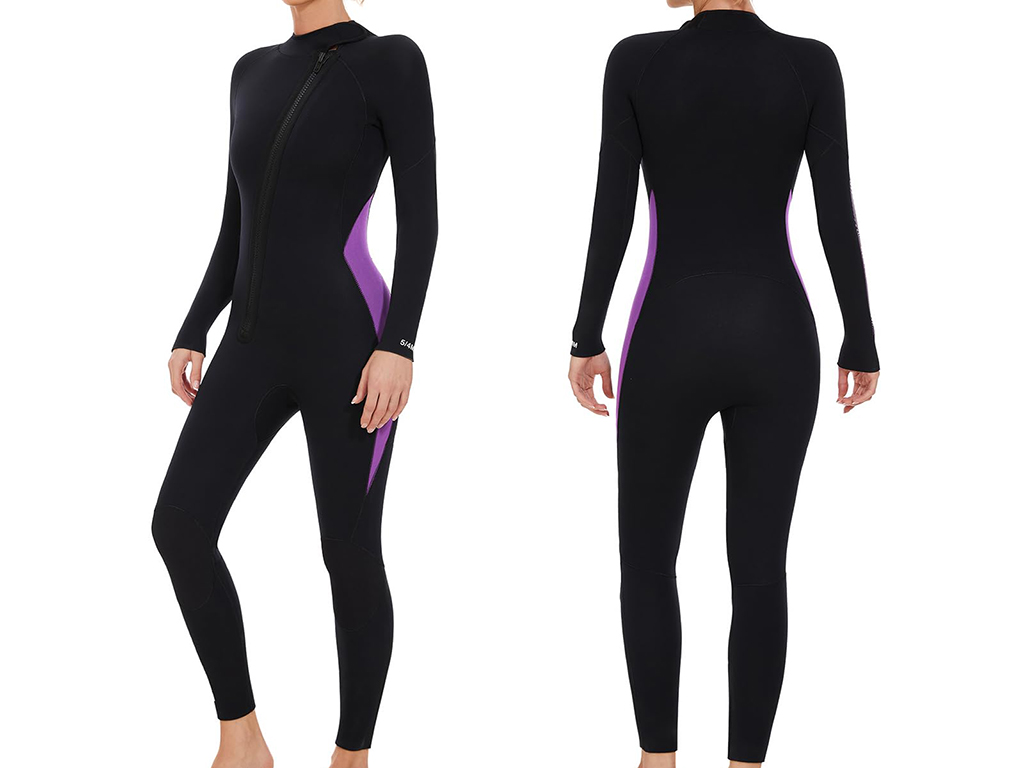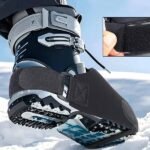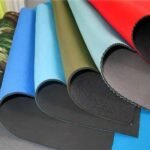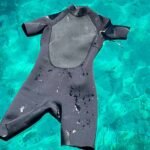If you’ve ever wondered whether a wetsuit can help you stay afloat in the water, you’re not alone. People often debate whether wetsuits make swimming easier or simply keep you warm. In this article, we’ll explore the buoyancy benefits of wetsuits, the different thicknesses available, and how they affect performance. If you’re considering a new wetsuit for water sports, diving, or even casual swimming, you’ll find helpful insights here.
What Is a Wetsuit and How Does It Work?
A wetsuit is a specialized piece of apparel designed to keep you warm and comfortable in the water. It’s typically made from neoprene, a flexible, rubber-like material that traps a thin layer of water between the suit and your skin. This layer of water is warmed by your body heat, creating insulation that helps maintain your core temperature in cold or cool environments.
The primary function of a wetsuit is to slow down heat loss, but it also offers additional benefits. Neoprene’s natural buoyancy helps keep you afloat, making it easier to swim or stay on the surface. While it’s not a life-saving device, a wetsuit can provide an added sense of security, especially in open water.
Different wetsuit styles and thicknesses are tailored to various water temperatures and activities. Full-body suits offer the most coverage and warmth, while shorties and spring suits provide lighter protection for milder conditions. Triathlon wetsuits focus on flexibility and efficiency, while dive suits prioritize warmth and maximum buoyancy for deep-water exploration.
By understanding how a wetsuit works and what it’s made of, you can make more informed choices. Whether you’re a beginner swimmer, an experienced diver, or a recreational surfer, the right wetsuit can enhance both your safety and performance in the water.
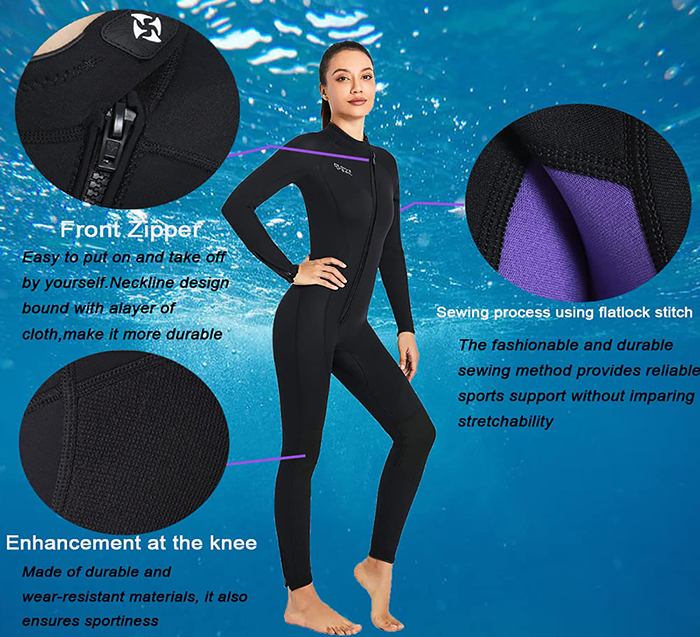
Do wetsuits allow you to float?
A common question among swimmers and water sports enthusiasts is whether wearing a wetsuit actually helps you float. The answer is yes—wetsuits provide buoyancy. They are made from neoprene, a lightweight material filled with tiny air bubbles. These bubbles give the suit its floatation properties.
When you wear a wetsuit, the neoprene helps reduce your body’s density. This means that even if you’re not a strong swimmer, the suit can help you stay on the surface. It’s not a life jacket, but it certainly makes floating easier. This can be especially useful in open-water conditions or when you need a moment to rest.
How Buoyancy Works in Wetsuits
Buoyancy occurs because the neoprene material in a wetsuit is less dense than water. Each millimeter of neoprene adds more air cells, which increases flotation. This is why a wetsuit can support your body weight, helping you maintain a stable position in the water. For beginners, this added lift can be reassuring, especially when swimming in the ocean or large lakes. For more experienced swimmers, it can improve efficiency, allowing them to glide more smoothly through the water.
Neoprene Density and Air Cells
Not all neoprene is created equal. High-quality neoprene, like that used in premium wetsuits, has a consistent cell structure that ensures even buoyancy. Cheaper materials may lack uniformity, which can affect how well the suit supports you in the water. This is why many serious water sports enthusiasts invest in a higher-grade wetsuit—they want reliable buoyancy that lasts over time.
Real-World Applications
In real-world situations, buoyancy provided by a wetsuit can make a difference. Surfers often rely on their wetsuits to help them recover quickly after a wipeout. Divers use buoyancy to conserve energy and reduce fatigue. Even casual swimmers can benefit from the added lift, as it allows them to stay in the water longer, enjoy the activity more, and feel more secure.
Overall, wetsuits allow you to float because of the unique properties of neoprene. By choosing a suit that matches your needs and conditions, you can take full advantage of this buoyancy, improving both safety and performance in the water.
How much buoyancy does a wetsuit give you?
The amount of buoyancy a wetsuit offers depends on several factors. The thickness of the neoprene plays the biggest role. Thicker neoprene contains more air, which increases flotation. For example, a suit that’s 5mm thick around the torso will offer more buoyancy than one that’s 3mm.
Table: Neoprene Thickness vs. Buoyancy
| Neoprene Thickness | Buoyancy Level | Typical Use Case |
|---|---|---|
| 2mm | Low | Warm water, recreational use |
| 3mm | Moderate | Mild waters, general activities |
| 5mm | High | Colder waters, longer sessions |
| 7mm | Very High | Cold water diving, extended immersion |
As you can see, choosing a thicker wetsuit provides more flotation, but it also comes with trade-offs. Thicker suits may feel bulkier, restrict movement slightly, and be warmer. On the other hand, thinner suits provide less buoyancy but are more flexible and comfortable in warm water.
Which Wetsuit Thickness Offers the Best Buoyancy?
There’s no one-size-fits-all answer. The best thickness depends on your activity and water conditions. For instance:
- 2mm suits are great for warm waters and light swimming where buoyancy isn’t a major concern.
- 3mm suits offer a balance of buoyancy and flexibility, making them suitable for moderate temperatures and recreational swimming.
- 5mm suits provide a noticeable boost in buoyancy, which is helpful for beginners, divers, or anyone in cooler water.
- 7mm suits are primarily used by divers in cold water. They offer the most flotation but may feel restrictive for casual swimming.
By understanding how thickness affects buoyancy, you can choose a wetsuit that meets your needs.
How Does a Wetsuit Improve Swimming and Water Sports Performance?
Buoyancy isn’t just about floating—it also enhances performance. A wetsuit’s buoyant properties help lift your body in the water, reducing drag. This allows swimmers to move more efficiently and with less effort.
For competitive swimmers or triathletes, this buoyancy can be a game-changer. By keeping the legs and torso higher, a wetsuit helps maintain a streamlined position. This results in faster swim times and less fatigue.
Even for casual water sports enthusiasts, the extra lift can improve confidence. Feeling secure in the water allows you to focus on technique, enjoy longer sessions, and explore new activities. Whether you’re surfing, paddleboarding, or snorkeling, the right wetsuit can make the experience more enjoyable.
Are There Different Types of Wetsuits for Buoyancy?
Wetsuits come in various designs, each offering different levels of buoyancy and flexibility. Some common types include:
- Full suits: Cover the entire body, providing maximum buoyancy and warmth.
- Shorties (short wetsuits): Leave arms and legs exposed, offering lighter buoyancy and better mobility.
- Spring suits: A hybrid between full and short wetsuits, these offer moderate buoyancy and flexibility.
- Dive suits: Typically thicker and designed for deeper, colder water, dive suits give the highest buoyancy.
- Triathlon suits: Engineered for competitive swimmers, these suits balance buoyancy and range of motion.
Each type of wetsuit serves a specific purpose. For general water activities, a shortie or spring suit may be enough. For colder waters or longer swims, a full suit provides the buoyancy and protection you need.
Is There a Difference Between Regular and High-Buoyancy Wetsuits?
Not all wetsuits are created equal. Some are specifically designed to offer extra flotation. These high-buoyancy wetsuits often feature:
- Thicker neoprene panels in the chest and thighs for more lift.
- Special buoyancy inserts or air cell layers.
- Hybrid construction that combines flexible materials with buoyancy-enhancing zones.
Regular wetsuits, on the other hand, prioritize general warmth and flexibility. They still provide some lift but may not be as effective for those who need maximum floatation. For beginners or anyone who struggles to stay afloat, a high-buoyancy suit can make a noticeable difference.
Do Wetsuits Help Non-Swimmers Stay Afloat?
A wetsuit is not a life jacket, but it does help non-swimmers remain on the surface longer. The buoyant neoprene reduces the effort required to keep your head above water. This can be a lifesaver in situations where you need to rest or regain energy.
For non-swimmers, a wetsuit provides added confidence. It helps prevent sinking and makes it easier to learn basic swimming skills. That said, it’s important to remember that a wetsuit is not a substitute for proper safety equipment or swim training. It’s a helpful tool, but not a guaranteed life-saving device.
How to Choose the Best Wetsuit for Maximum Buoyancy?
When selecting a wetsuit, consider these key factors:
- Thickness: Thicker neoprene provides more buoyancy. If flotation is a priority, go for 5mm or 7mm thickness.
- Fit: A snug fit ensures the neoprene does its job. Loose suits allow water to flow through, reducing buoyancy and warmth.
- Activity Type: Choose a wetsuit designed for your sport. Triathlon suits offer a balance of buoyancy and flexibility, while dive suits focus on warmth and flotation.
- Water Temperature: Colder waters may require a thicker suit, which also adds buoyancy. Warmer waters call for thinner suits with less flotation.
By weighing these factors, you can find a wetsuit that keeps you afloat and comfortable, enhancing your overall experience in the water.
Conclusion
Wetsuits do help you float. They provide buoyancy, improve swimming efficiency, and increase comfort in the water. Whether you’re a seasoned athlete or just getting started, understanding the role of thickness, fit, and suit type can make all the difference. With the right wetsuit, you’ll not only stay afloat but also enjoy your water activities to the fullest.
At Szoneier, we specialize in manufacturing premium neoprene wetsuits designed to provide exceptional buoyancy, comfort, and performance. If you’re a brand, wholesaler, or retailer looking for high-quality, customizable wetsuits, we’re here to help. Contact us to learn more about our products and how we can support your needs.

